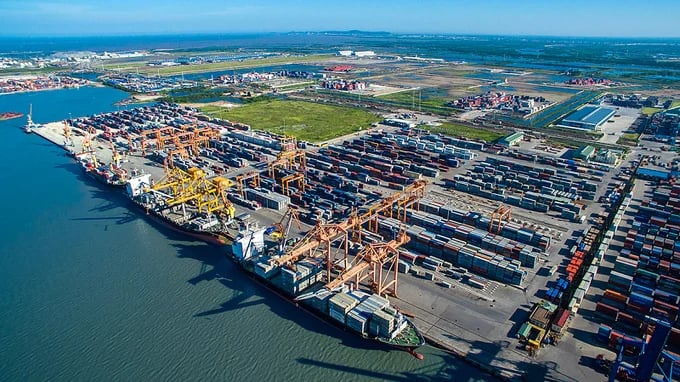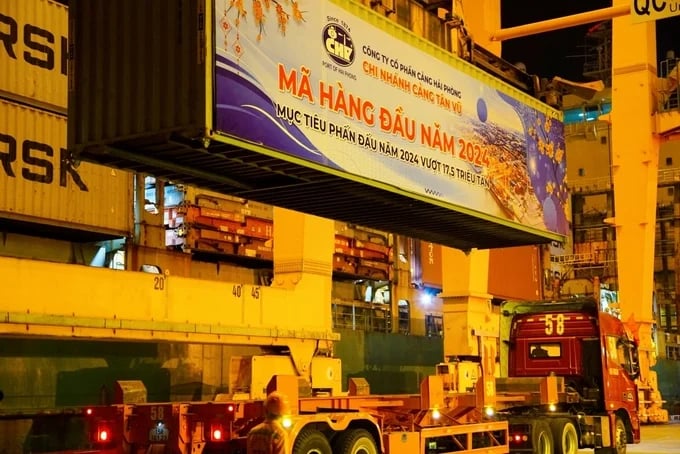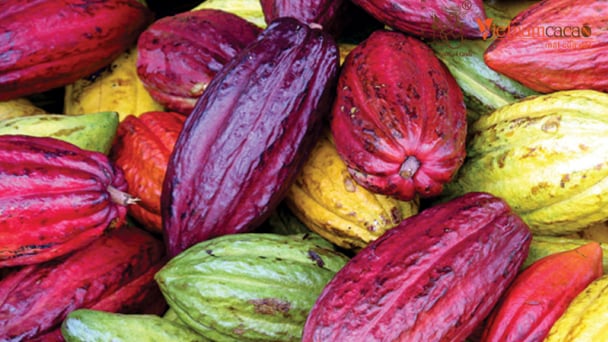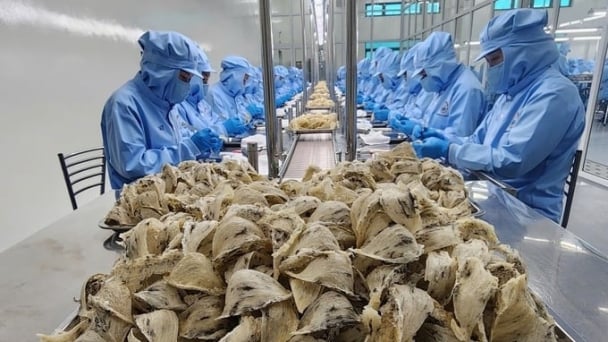May 26, 2025 | 16:44 GMT +7
May 26, 2025 | 16:44 GMT +7
Hotline: 0913.378.918
May 26, 2025 | 16:44 GMT +7
Hotline: 0913.378.918
Hai Phong has many outstanding advantages in seaports for developing the logistics service industry as it possesses various transportation modes: maritime, road, rail, inland waterway, and air transport. In terms of seaports, Hai Phong has numerous ports with modern facilities, offering the potential for the development of the logistics service industry, such as the largest import-export cargo volume in the northern region.
In recent years, in response to the shifting trend in container cargo transportation, specialized container ports have been increasingly developed, making Hai Phong the second-largest container transhipment hub in the country.

Hai Phong boasts a modern seaport system.
Additionally, its logistics infrastructure facilitates high connectivity among various transportation modes, including road, rail, inland waterway, maritime, and air transport, which is conducive to multimodal transportation.
However, the synchronization among transportation modes remains inadequate. Although Hai Phong has all five transportation modes, over 80% of cargo volume through seaports continues to be transported by road. Meanwhile, inland waterway transport, which offers many advantages and potential cost savings of 20-25%, has not been fully utilized compared to road transport.
Despite having over 50 ports capable of receiving vessels for cargo loading and unloading, the volume of cargo transported through waterways is very low. This is due to limited depth along routes from Hai Phong to northern provinces and numerous low bridges across rivers that are not suitable for waterway vessels carrying containers.
Moreover, the container cargo transport system by rail is outdated and has not been connected to the new ports of Dinh Vu - Lach Huyen, only handling about 3% of cargo volume from these ports.
According to Mr Dao Trong Khoa, Vice Chairman of the Vietnam Logistics Service Business Association, Hai Phong mainly comprises small and medium-sized logistics enterprises, with competitiveness in both international and domestic service markets still being limited.

Groundbreaking Ceremony for the Investment Project in Construction and Operation of Infrastructure for the Industrial Zone and Non-Tariff Zone of Xuan Cau with a total investment of VND 11.1 trillion.
To promote the development of logistics in line with its outstanding advantages, according to experts, Hai Phong needs to establish a comprehensive plan among transportation modes promptly. Developing a transportation trading platform to best connect shippers and logistics service providers, laying the foundation for Vietnamese logistics enterprises to participate more in the supply chain.
On the other hand, it is necessary to enhance the capacity of warehouse systems to meet the requirements of key seaports for global logistics activities; warehouses for cargo consolidation must be prioritized for development by the city; strong implementation of the national single window mechanism and administrative procedure reform.
Hai Phong currently has over 50 ports. In recent years, Hai Phong has emerged as the largest seaport logistics centre in the northern region, with logistics services growing at a rate of about 20-23% per year, contributing to the annual growth of the city's Gross Regional Domestic Product (GRDP) from 13-15%.
Hai Phong sets the goal of becoming the national maritime economic hub by 2025, the national logistics service centre, with cargo through the port estimated to reach 300 million tons, with an average growth rate in the 2019-2025 period reaching 15.1% per year.
By 2030, it aims to become a modern international logistics service centre via sea, air, high-speed road, and high-speed rail. Cargo through the port is estimated to reach 600 million tons.
By 2045, continuing to increase the contribution of port-related services, and logistics services to the GRDP will contribute to making Hai Phong a highly developed city among the top cities in Asia and the world.

The Tan Vu Port welcomes large vessels.
In recent years, Hai Phong City has allocated significant resources to continue investing in completing and modernizing the comprehensive port system and interregional connectivity with a series of ports under construction, aiming to gradually develop Hai Phong into one of the largest port complexes in the country and the region.
Recently, Hai Phong commenced the construction of the Xuan Cau Non-Tariff Zone project with an investment of over VND 11 trillion. The establishment of the Xuan Cau Industrial Zone and non-tariff zone, along with the deep-water port system of the Lach Huyen International Gateway Port, will contribute to creating an increasingly complete infrastructure and maximizing the value chain of the Lach Huyen International Gateway Port as well as the logistics and industrial zones in this area.
Currently, Hai Phong is urgently completing 4 ports (3, 4, 5, 6) in Lach Huyen, and after completion, 2 more ports (ports 7 and 8) will be constructed.
According to Mr. Nguyen Tuong Anh, General Director of Hai Phong Port Joint Stock Company, in the future, the Lach Huyen International Gateway Port project of Hai Phong Port will be implemented urgently.
It is expected that when put into operation for exploitation in the fourth quarter of 2024, container terminals 3 and 4 of the Hai Phong International Gateway Port will contribute to enhancing the operational capacity of Hai Phong Port and the entire port system in the Hai Phong area in general, meeting the increasing demand for maritime transportation of goods from northern provinces and cities.

Welcoming the first shipment of 2024 at Hai Phong Port Corporation.
Translated by Hoang Duy

(VAN) Amidst the current intense competition, businesses must establish sustainable linkages, prioritize technological investments, build brand identity, and obtain international certifications.

(VAN) As director of the Thuy Tuyet Bamboo and Rattan Handicraft Cooperative in Soc Trang, she has revitalized a traditional craft, generating sustainable livelihoods for hundreds of workers - particularly from the Khmer ethnic minority.

(VAN) Vietnam has been classified as a ‘low-risk’ country for deforestation under EUDR, granting local producers a strategic edge in sustainable market development.
/2025/05/19/2617-14-211139_18.jpg)
(VAN) Vietnamese bird's nest enterprises are eager to access the promising Chinese market; however, only those with thorough preparation, truthfulness, strict regulatory compliance, and consistent product quality will be positioned for success.

(VAN) For Vietnamese bird's nest products to penetrate deeply and sustainably into the Chinese market, it requires not only product quality but also strict compliance with the regulations on quarantine, traceability, and food safety.

(VAN) As one of Vietnam's most high-value products, bird's nest is asserting its position on the national agricultural export map. China, with an annual demand of hundreds of tons, is considered the most promising market.
/2025/05/22/5250-1-184853_288.jpg)
(VAN) According to a representative from the Central Retail Vietnam, Vietnamese products such as seafood, sweet potatoes, dragon fruit, coffee, and spices hold great potential in the Thai market.